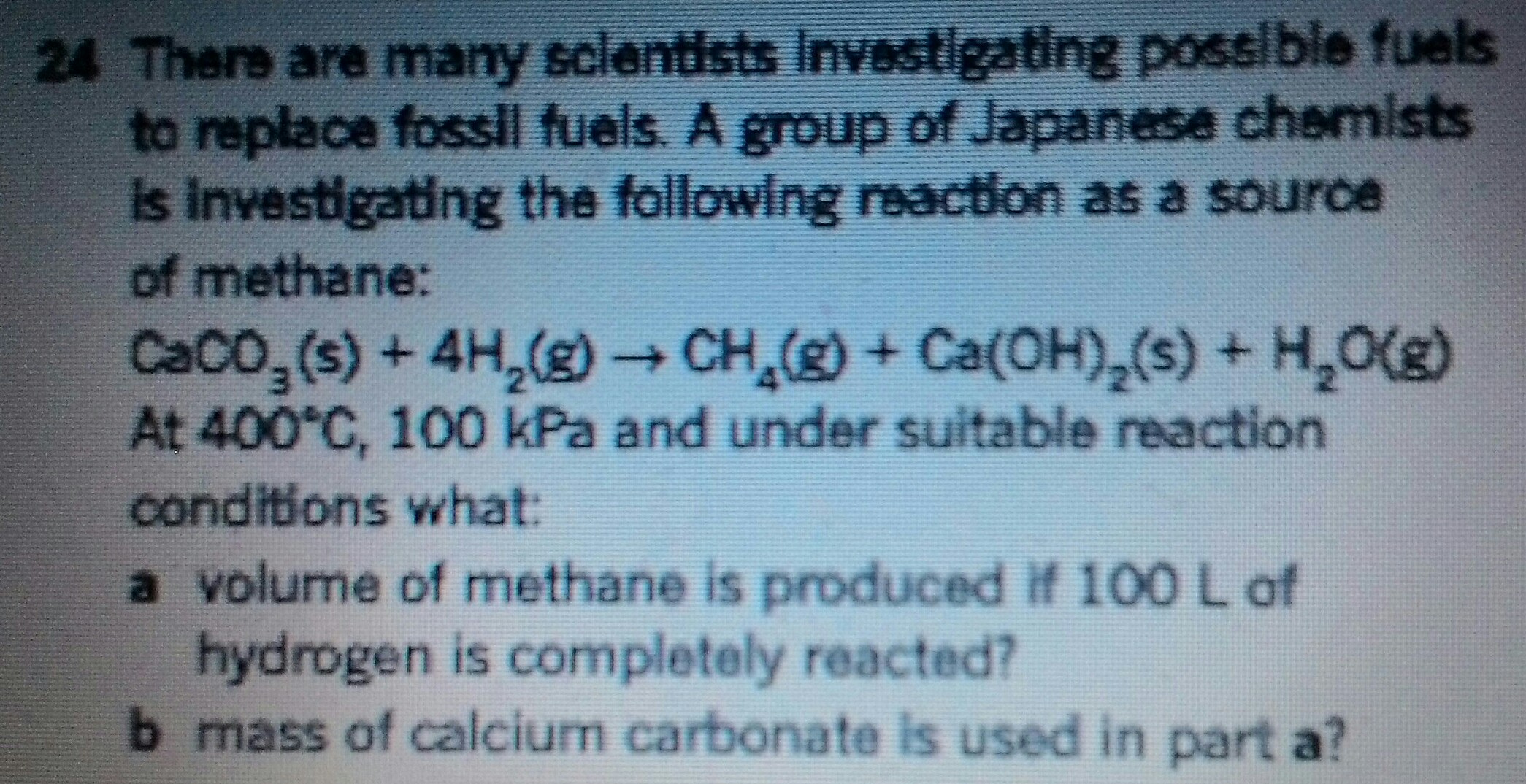What is the mass of calcium carbonate used in part a.?

Do not help me out with question 24a, as i have already worked out the answer for that question. I'm confused with question 24b, i need help with that question only. The answer for q24a is 25l
Thank You

Do not help me out with question 24a, as i have already worked out the answer for that question. I'm confused with question 24b, i need help with that question only. The answer for q24a is 25l
Thank You
2 Answers
Explanation:
The idea here is that you need to use the ideal gas law equation to find the number of moles of hydrogen gas used in the reaction (or the number of moles of methane produced by the reaction).
As you know, the ideal gas law equation looks like this
#color(blue)(ul(color(black)(PV = nRT)))#
Here
#P# is the initial pressure of the gas#V# is the volume it occupies#n# is the number of moles of gas present in the mixture#R# is the universal gas constant, equal to#0.0821("atm L")/("mol K")# #T# is the absolute temperature of the gas
Rearrange to solve for
#PV = nRT implies n = (PV)/(RT)#
Plug in the values you have for the pressure, the temperature, and the volume of hydrogen gas, but do not forget to convert the pressure to atmospheres and the temperature to degrees Celsius!
#n = (100/101.325 color(red)(cancel(color(black)("atm"))) * 100 color(red)(cancel(color(black)("L"))))/(0.0821(color(red)(cancel(color(black)("atm"))) * color(red)(cancel(color(black)("L"))))/("mol" * color(red)(cancel(color(black)("K")))) * (273.15 + 400)color(red)(cancel(color(black)("K"))))#
#n = "1.786 moles"#
The balanced chemical equation tells you that the reaction consumes
#1.786 color(red)(cancel(color(black)("moles H"_2))) * "1 mole CaCO"_3/(4color(red)(cancel(color(black)("moles H"_2)))) = "0.4465 moles CaCO"_3#
Now all you have to do to find the mass of calcium carbonate is to use the compound's molar mass.
#0.4465 color(red)(cancel(color(black)("moles CaCO"_3))) * "100.09 g"/(1color(red)(cancel(color(black)("mole CaCO"_3)))) = color(darkgreen)(ul(color(black)("45 g")))#
I'll leave the answer rounded to two sig figs, but keep in mind that you have only one significant figure for the pressure of the gas and the volume occupied by the hydrogen gas.
Explanation:
.

Let's let:
The center
From the Pythagorean formula:
The area of the rectangle is the product of its length and width:
Let's solve for
This is the Area as a function of
This makes sense because if
The same thing happens if
Therefore, we can define the domain of the Area function as:
which means


